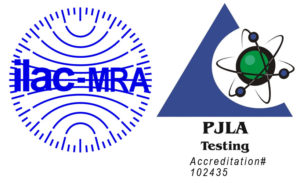High Speed Vascular Graft Testing: The Influence of Varying Structural…
Stent Testing
by | SFB 1997 | Publications, Stent Testing
High Speed Vascular Graft Testing: The Influence of Varying Structural Characteristics of Polyurethane and Natural Rubber Arterial Substitutes
Conti, J.C., Strope, E.R., Rohde, D.J., and Spence, L.D.
Dynatek Dalta Scientific Instruments, Fourth and Main, Galena, MO 65656
SFB 1997
As the arrival of an efficacious arterial substitute (vascular graft) and vascular stent becomes more imminent, a thorough understanding of how their properties influence how they must be tested is critical. A challenging yet critically important issue is the ability to evaluate the long term durability characteristics of a device in a reasonable period of time. The obvious solution is to test at an accelerated rate or frequency.
It is sometimes possible to evaluate the frequency response of a device so that a high speed test evokes the same loading or stressing that the device experiences at biologically relevant frequencies. At the very least an investigator should have an understanding of any aberrant conditions associated with the frequency at which they are testing.
We have developed an understanding of how certain chemical or structural characteristics influence the frequency response of grafts and stents and used this information to help us design more reliable protocols. (1)
Methods – A variable speed dynamic internal compliance tester was used to investigate the volume-pressure relationships of three polyurethane and eight natural rubber arterial substitutes. The initial volume of the arterial substitute was determined by measuring its length with a ruler and its diameter with machinist’s pins precise to 0.001 inch. Wall thickness was determined using a calibrated micrometer. Ten cm long samples were the mounted onto the dynamic internal compliance tester and cycled from 80 to 120 mm Hg at 70bpm. From this experiment the radial compliance of the graft between the aforementioned pressures was determined. After this, the testing frequency was increased to 200, 400, 600, 800, 1000, 1200, and 1400bpm and the dynamic radial compliance determined.
Results – Table 1 is a summary of the results obtained.
Table 1
Percent Dynamic Radial Compliance
Graft 70 200 400 600 800 1000 1200 1400
bpm bpm bpm bpm bpm bpm bpm bpm
PU 1 3.06 3.08 2.93 3.41 1.53 1.36 1.94 2.05
PU 2 3.35 3.30 2.83 3.74 1.24 1.13 1.94 1.92
PU 3 2.87 2.76 2.68 3.07 1.30 1.35 1.59 1.61
L 1 9.01 9.28 9.17 7.37 2.82 2.87 2.37 1.75
L 2 3.28 3.27 3.16 3.28 3.08 1.35 1.13 1.47
L 3 25.19 18.48 6.97 6.95 6.05 . . .
Conclusions – There are several characteristics of these products that influence their ability to be tested at high speed. With vascular grafts, this information is important to assure the investigator that the devices are not being over tested or under tested. It is probably not appropriate to redesign this kind of a product simply so that it can be tested at a higher frequency. Arterial substitutes, however, are used to test porous vascular grafts and vascular stents. In this case, a more thorough knowledge of these testing frequency-influencing characteristics is important.
1) Relating The Frequency Dependent Radial Compliance To The Tensile Modulus of Polyurethane Vascular Grafts, Bozzi R, Conti JC, Soldani G, Spence L, Strope E, and Withrow D, presented at the Fifth World Biomaterial Congress, Toronto, 1996.



